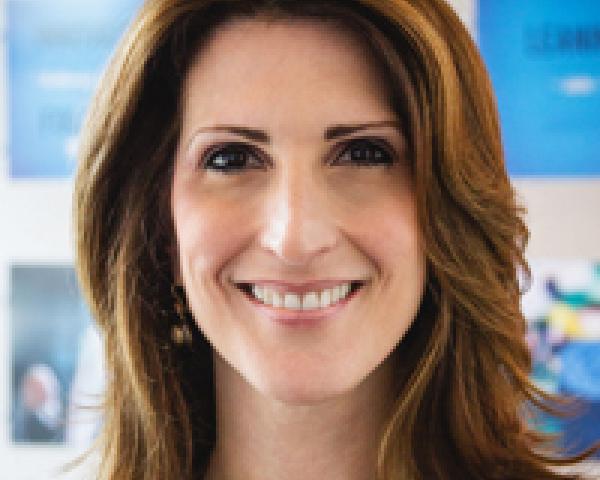Innovation insight: Competency eats culture for lunch.
If you answer no to any of these five questions, then it may be time to hire or outsource talent to fill capability gaps before doing anything with the optics of innovation.
If your 2017 objectives include creating a more innovative culture in your organization, I invite you to learn from seven years of experience working with Goliath, who is gazing enviously at David and wondering how he would look with that hairdo.
Over and over again, we’ve heard and experienced stories of companies declaring innovation and then focusing on the optics as a pathway to innovation culture. By optics, I mean the external aspects of disruptive entrepreneurs. Here are some examples:
- Cool-looking office space with modular desks
- Casual dress and flex hours
- Open source idea generation software
- Hackathons
- The presence of millennials
- Frequent use of the words blockchain, IoT and drones
- A beer fridge
While all of the above are nice to have, with innovation, this is the equivalent of “fake it till you make it.” And unfortunately, Goliath never makes it unless he recognizes that the most innovative and successful cultures don’t focus on their culture; they focus on their competencies. In fact, they are not even aware of their culture or even that much impressed by it.
 Design strategy is the skill set of how to put your challenge into the right frame and describe it in a new context. This capability is different from business strategy. (Photo: Thinkstock)
See also: The Questions That Aren’t Being Asked
Five Competencies You Need
Design strategy is the skill set of how to put your challenge into the right frame and describe it in a new context. This capability is different from business strategy. (Photo: Thinkstock)
See also: The Questions That Aren’t Being Asked
Five Competencies You Need
I must confess that when our firm went back across all the lessons learned over the last several years and connected the dots, it was like a Eureka moment for me. So what are those competencies?
- Design Strategy
- Research
- Co-creation
- Experience Design
- Communication/Storytelling
While some of these may sound like common business capabilities, there are some important distinctions that can make or break your innovation mojo.
Design strategy is the skillset of how to put your challenge into the right frame and describe it in a new context. This capability is different from business strategy.
It’s not about understanding your current business, your market or your competition. It’s about the human-centered trends that are the most important for you to focus on. Typical business strategists don’t have this skill — anthropologists, behaviorists and futurists do.
Research is the capability to get at the heart of what the key players in your value chain really think and feel. Innovation research is different from market research in that it seeks to infuse the future trends into the learning so that you can actually identify and quantify a new target group of people and their unmet needs and design around them. Typical research analysts do not have this skill. This capability is part art, part science.
Co-creation is the capability to design productive work sessions that generate useful and valuable output. When companies bring people together at a meeting table, oftentimes problems don’t get solved in the room; they are just talked about. Effective co-creation not only cuts through power struggles, it also builds in the support for execution of new ideas. People support what they create.
Experience design is how you make new ideas real. It requires identifying what consumers value most and focusing on it to test, learn, then build. Insurance companies try to build every aspect of an experience to perfection before bringing them to market. In our experience, few insurance companies know how to prototype and test effectively and efficiently.
Communication/storytelling is about inspiring internal constituents and consumers around your new idea. This is not your garden variety marketing and advertising.
See also: Where Will Real Innovation Start?
Typical insurance company marketing departments are wired to focus on outputs (i.e., collateral, etc.), not outcomes. If the new product, service or business model isn’t communicated authentically and in keeping with the original intent, the campaign will fall on deaf ears.
 If you ask 10 people in the organization where your innovation opportunity space is, would they all give you the same answer? (Photo: Thinkstock)
Five Questions To Ask Yourself
If you ask 10 people in the organization where your innovation opportunity space is, would they all give you the same answer? (Photo: Thinkstock)
Five Questions To Ask Yourself
If you are not sure how your organization stacks up against these five capabilities, ask yourself these questions:
- If you ask 10 people in the organization where your innovation opportunity space is, would they all give you the same answer?
- Does your organization agree on what consumer needs you should solve?
- Do you successfully generate new, disruptive ideas?
- Have you brought any disruptive ideas to market?
- Are you getting new income streams from them?
If you answer no to any of the above five questions, then it may be time to hire or outsource talent to fill capability gaps before doing anything with the optics of innovation.Goliath needs a lesson from his mother: It’s what’s inside that counts.
 Design strategy is the skill set of how to put your challenge into the right frame and describe it in a new context. This capability is different from business strategy. (Photo: Thinkstock)
See also: The Questions That Aren’t Being Asked
Five Competencies You Need
I must confess that when our firm went back across all the lessons learned over the last several years and connected the dots, it was like a Eureka moment for me. So what are those competencies?
Design strategy is the skill set of how to put your challenge into the right frame and describe it in a new context. This capability is different from business strategy. (Photo: Thinkstock)
See also: The Questions That Aren’t Being Asked
Five Competencies You Need
I must confess that when our firm went back across all the lessons learned over the last several years and connected the dots, it was like a Eureka moment for me. So what are those competencies?
 If you ask 10 people in the organization where your innovation opportunity space is, would they all give you the same answer? (Photo: Thinkstock)
Five Questions To Ask Yourself
If you are not sure how your organization stacks up against these five capabilities, ask yourself these questions:
If you ask 10 people in the organization where your innovation opportunity space is, would they all give you the same answer? (Photo: Thinkstock)
Five Questions To Ask Yourself
If you are not sure how your organization stacks up against these five capabilities, ask yourself these questions:








